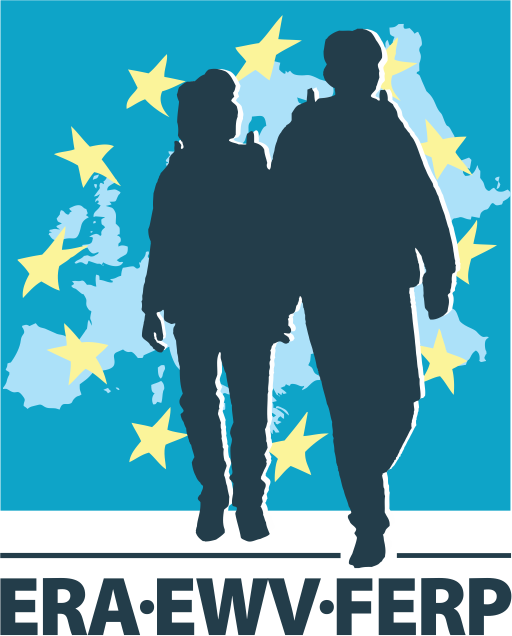
Route
From Bad Bentheim (D) to the Hanseatic city Oldenzaal (NL) is a day walk; you cross the border river Dinkel via a wooden bridge. From the border at the Dinkel Bridge to the North Sea on the beach of The Hague is only 188 km as the crow flies; the Marskramerpad, the long-distance hiking trail that connects the two points, needs 358 km. But that 90% more distance is well worth it (and you can’t fly like a crow anyway). The route through the small-scale Dutch landscape leads the hiker through eight regions: gently sloping agricultural area with small places, estates, a vast forest area with sand drifts (but a village every ten km), typical Dutch polder area with a beauty that only the tourist-on-foot can enjoy, beautiful Dutch cities of medieval origin which is still visible and finally the park city of The Hague with the white beaches of Scheveningen and the North Sea that looks different every time. A cross-section of the Netherlands in more ways than one.
Starting Point
Bad Bentheim or Oldenzaal
(Administratively seen you enter Netherland in the municipality of Losser.)
End Point
Den Haag, better known as The Hague
Which cities and towns does the E-path pass through
Oldenzaal, Deventer, Amersfoort, Breukelen, Leiden, Den Haag
Length
358 km
Ground path of the E-path
Marskramerpad (A ‘marskramer’ is a peddler, an itinerant seller of household items)
Responsible organization
Wandelnet – www.wandelnet.nl
Publications
Marskramerpad. From east to west through the Netherlands
ISBN: 9789071068935 | Number of pages: 208
Year: 2016
The walking guide is in Dutch, but you’ll understand enough to plan and find your way.
Maps
The walking guide (see above) contains 73 strip maps with the route
Marking system

White / red is the way sign in Netherland for long-distance paths
Crossing other E-paths
The last ten kilometers, from the royal palace ‘Huis ten Bosch’ to the beach of Scheveningen, the route runs along with the E9, the international Atlantic Coastal Path.
Practical
The small-scale Dutch landscape has plenty of beautiful sceneries just waiting to be explored.
Netherlands is the most densely populated country in Europe, but this is not noticeable outside the major cities in the west of the country. In the countryside you will find almost always accommodation, especially B&B’s, campsites and public transport mostly within walking distance. Don’t hesitate to speak to people and ask for information along the way. Most Dutch people speak some English, the elderly also German and some French. The general attitude towards foreign walkers is open and friendly.
Have a look at the Walkers Welcome addresses in the back of the walking guide ‘Marskramerpad’. At these addresses you can arrive soaked and with muddy boots. See further:
– www.vriendenopdefiets.nl/en. Literally friends on bicycles, but walkers are also very welcome. Almost 6000 listed guest addresses can be found, often near hiking and biking trails. Do not expect a four-star accommodation, but do count on a clean bed and a hearty breakfast against a friendly price. Once you’re registered as a Friend (€10/year) of this non-profit organization you can search online for guest addresses along the route, or use of the guest address booklet.
– www.bedandbreakfast.nl. Also available as an app in English, German, French, Spanish and Italian language. Sometimes it is easier to mail or phone directly to the wanted address. Use google.maps (the bed icon) to identify the desired B&B address; in most cases address details or a website will appear when you click on the location.
Camping
Campsites are cheap, safe and mostly comfortable, prices between € 10 and € 20. There are sometimes possibilities to camp at a farm site (cheaper). We advise to use google.maps and enter ‘camping’ in the search box. See also:
– mijn.natuurkampeerterreinen.nl/ Camp sites in nature, about 130 addresses in NL. Website also in English, German and French.
– www.trekkershutten.nl/ Hiker’s Cabins, website also in English, German and French.
There are many campsites near the route, but it is sometimes difficult to find the right addresses. Ask local people or simply ask at the end of the day the owner of an attractive site if you could put your tent there for one night. (Wild camping is officially prohibited in NL; enforcing the ban is a problem, however.)
Food
There is enough food for every budget. It is sometimes difficult to find simple eateries in rural villages. A ‘cafeteria’ offers a simple hot meal: French fries, a meatball and sometimes fish. Bread, vegetables and fruit are cheap in shops. Your guide ‘Marskramerpad’ will give you some information (icons on the map), but also use google maps on your mobile phone.
Travel
Stations and bus stops are indicated on the section maps in your guide. Find your favorite public transport app to help you out.
Trains: www.ns.nl/en/journeyplanner/#/
Buses and other public transport: 9292.nl/en
Gear
The rambler doesn’t need specific gear to walk the E-path in NL.
Links
www.wandelnet.nl/wandelroute/231/Marskramerpad/overzicht
– www.holland.com/global/tourism/information/general/all-about-the-netherlands.htm
– bartravel.com/english/europe2/articles/netherlands-general-info.html
– www.britannica.com/place/Netherlands
References
www.traildino.com/trace/continents-Europe/countries-European_Trails/trails-E11
hiking.waymarkedtrails.org/#route?id=1175710&map=6!54.7014!15.6274
© Wandelnet / Ad Snelderwaard
